3.1 General history of lighthouses in Australia
The first lighthouse to be constructed along Australian soil was Macquarie Lighthouse, located at the entrance to Port Jackson, NSW. First lit in 1818, the cost of the lighthouse was recovered through the introduction of a levy on shipping. This was instigated by Governor Lachlan Macquarie, who ordered and named the light.
The following century oversaw the construction of hundreds of lighthouses around the country. Constructing and maintaining a lighthouse were costly ventures that often required the financial support of multiple colonies. However, they were deemed necessary aids in assisting the safety of mariners at sea. Lighthouses were firstly managed by the colony they lay within, with each colony developing their own style of lighthouse and operational system. Following Federation in 1901, which saw the various colonies unite under one Commonwealth government, lighthouse management was transferred from state hands to the Commonwealth Lighthouse Service.
Lamps and optics: an overview
Lighthouse technology has altered drastically over the centuries. Eighteenth century lighthouses were lit using parabolic mirrors and oil lamps. Documentation of early examples of parabolic mirrors in the United Kingdom, circa 1760, were documented as consisting of wood and lined with pieces of looking glass or plates of tin. As described by Searle, ’When light hits a shiny surface, it is reflected at an angle equal to that at which it hit. With a light source is placed in the focal point of a parabolic reflector, the light rays are reflected parallel to one another, producing a concentrated beam’.4
The catoptric system was largely obsolete from 1822 when Augustin Fresnel invented the dioptric glass lens. Dioptric systems were refined by Fresnel who took a convex lens and broke it down into a number of concentric annular rings. This design reduced the amount of light absorbed by the lens itself and reduced its overall weight.
The first dioptric lens was installed in the French lighthouse, Cordouan, in 1823. Fresnel’s dioptric system dominated lighthouse lens technology for over 150 years. The majority of heritage listed lighthouses in Australia still have dioptric lenses invented by Fresnel but made by others such as Chance Brothers (United Kingdom), Henry-LePaute (France), Barbier, Bernard & Turenne (France) and Svenska Aktiebolaget Gasaccumulator (Sweden).
Around 1900 incandescent burners came into use; in these, the fuel was supplied under pressure and burned inside an incandescent mantle, producing a brighter light within a smaller volume and with less fuel.
Throughout the hours of darkness the lightkeeper was required to keep pressure to the burner by manually pumping a handle as can be seen in Figure 8.
These optical systems were made in a range of standard sizes, called orders—see the Glossary of lighthouse terms in Appendix 2. Large dioptric lenses such as that shown in Figure 9 gradually decreased in popularity due to cost and the move towards unmanned automatic lighthouses. By the early 1900s, Australia had stopped ordering such lenses with the last installed at Eclipse Island in Western Australia in 1927. It is interesting to note that prior to that the last was ordered in 1909 for Cape DuCoudic in South Australia.
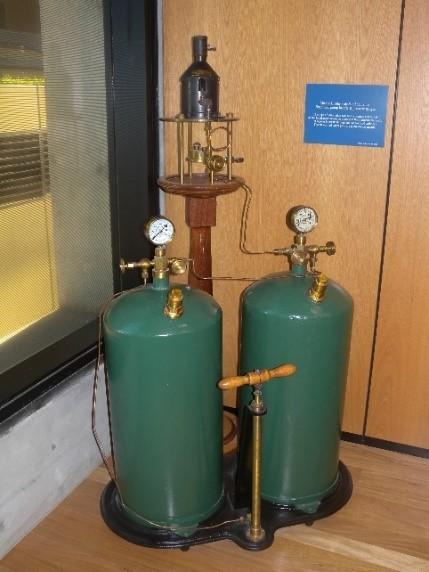 | 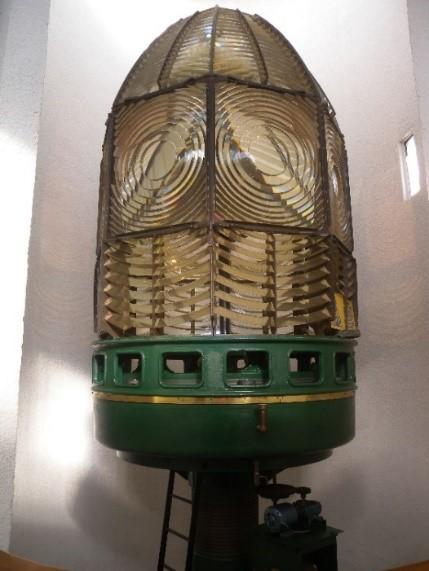 |
Smaller Fresnel lens assemblies continued to be made until the 1970s but eventually lost favour to cheaper plastic lanterns, which still used Fresnel’s technology.
In 1912, the Swedish engineer Gustaf Dalén was awarded the Nobel Prize in physics for a series of inventions for acetylene-powered navigation lights. Dalén’s system—including the sun valve, the mixer, the flasher, and the cylinder containing compressed acetylene—proved efficient and reliable. Acetylene was quickly adopted by the fledgling Commonwealth Lighthouse Service from 1915, and remained in use until it was finally phased out in the 1990s.
Since then electric lighting—using mains power, diesel generators, and solar-voltaic systems—has become the universal source of energy for Australian navigation lights.
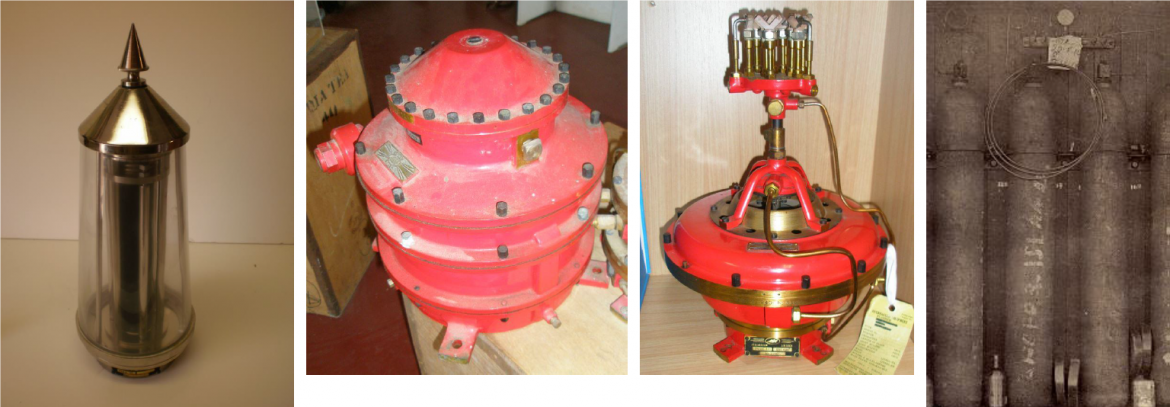 Figure 10. Dalén's system - sunvalve, mixer and flasher (Source: AMSA)
Figure 10. Dalén's system - sunvalve, mixer and flasher (Source: AMSA)
3.2 The Commonwealth Lighthouse Service
When the Australian colonies federated in 1901, they decided that the new Commonwealth government would be responsible for coastal lighthouses—that is, major lights used by vessels travelling from port to port—but not the minor lights used for navigation within harbours and rivers. There was a delay before this new arrangement came into effect. Existing lights continued to be operated by the states.
Since 1915, various Commonwealth departments have managed lighthouses. AMSA, established under the Australian Maritime Safety Authority Act 1990 (Cth), is now responsible for operating Commonwealth lighthouses and other aids to navigation, along with its other functions.
3.3 Tasmanian lighthouse management administration
The table below outlines the timeline for Tasmanian lighthouse management.
| Time Period | Administration |
| 1915-1927: | Lighthouse District No. 3 (Victoria, New South Wales, Tasmania), Hobart Headquarters. |
| 1927-1963: | Deputy Director of Lighthouses and Navigation, Tasmania. |
| 1963-1972: | Department of Shipping and Transport, Regional Controller, Tasmania. |
| 1972-1982: | Department of Transport [III], Regional Controller, Tasmania. |
| 1982-1983: | Department of Transport and Construction. Victoria-Tasmania Region, Transport Division (Tasmania). |
| 1983-1985: | Department of Transport [IV] Victoria-Tasmania Region, Hobart Office. |
| 1985-1987: | Department of Transport [IV], Tasmanian Region. |
| 1987-1990: | Department of Transport and Communications, Tasmanian Region. |
| 1991- | Australian Maritime Safety Authority. |
3.4 Mersey Bluff: a history
Aboriginal history
The history of the bluff stretches back thousands of generations, and there are many sites of Aboriginal heritage significance located mere meters from the lighthouse tower. This includes middens, tea tree living grounds, and petroglyphs. Stone artefacts were also found on the bluff, many of which have removed unlawfully.
Further consultation with the local Aboriginal Corporation will be reflected in the section in updates to the plan and in future versions of the plan.
Early European history
The Mersey River was first traversed by European explorers in 1823, but the landscape was deemed unfavourable for settlement. In 1826 however, the establishment of the Van Diemen’s Land Co. resulted in the region being explored, surveyed and settled – headed by Captain Bartholomew Boyle Thomas.
The settlements of Torquay and Formby were established in 1851 and 1853 respectively – Torquay on the eastern bank of the Mersey River and Formby on the western. By 1854, a wharf and other port facilities had been completed, and the trading of agricultural produce and timber increased significantly. In 1890, the settlements of Torquay and Formby amalgamated creating the township of Devonport.7
3.5 Planning a lighthouse
Why Mersey Bluff?
Prior to the installation of a lighthouse, an obelisk was mounted on Mersey Bluff that could be observed for some distance from sea. However, the obelisk could not be sighted after nightfall nor during cloudy conditions, leaving mariners entering the river from the westward completely unguided. Owing to the ever-increasing popularity of Formby (later Devonport) as a hub for agricultural and timber trade, the Marine Board determined that a light should be established on the Bluff in place of the obelisk.8 The Bluff’s position at the mouth of the Mersey River ensured the safe passage of mariners entering from Bass Strait.
Design
Mersey Bluff Lighthouse was designed by Huckson and Hutchison of Hobart. The original 1889 blueprint design illustrated a circular brick structure complete with capstone and weather vane.
Huckson & Hutchinson
Huckson & Hutchinson was founded in 1887 by Robert Huckson and R. Hutchinson. The firm was responsible for the design of many Tasmanian lighthouses including Table Cape, Mersey Bluff, Eddystone Point, Maatsuyker, Cape Sorrell, and Low Head. The firm also designed various alterations and necessary repairs to lightstations across the state.
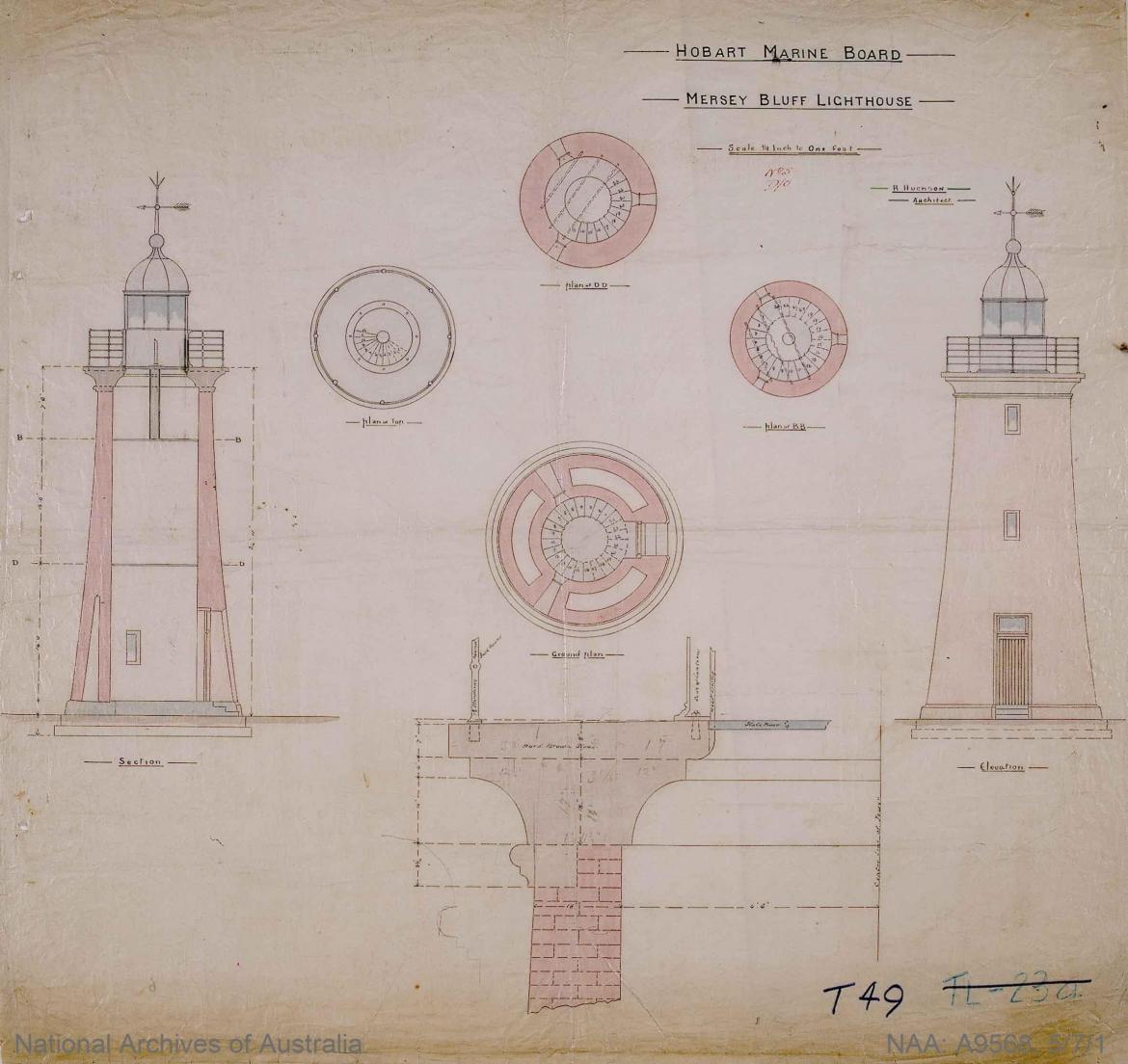 Figure 11. Huckson & Hutchison design blueprint for Mersey Bluff Lighthouse 1889. NAA: A9568, 5/7/1 (© Commonwealth of Australia, National Archives of Australia)
Figure 11. Huckson & Hutchison design blueprint for Mersey Bluff Lighthouse 1889. NAA: A9568, 5/7/1 (© Commonwealth of Australia, National Archives of Australia)
Construction
In June of 1888, tenders were called for the building of the lighthouse, keeper’s house, flagpole, tide house and signal shed. Messrs T and F Duff were chosen as the successful tenders with a cost of £1,559. Construction commenced on 16 October 1888 – which was reportedly “…carried out in a most substantial manner”.9 Constructed with a cement concrete foundation, the brick tower stood on a “plinth of soild basalt” with a cap of white Bellerive sandstone.10 The lighthouse was completed less than 12 months after commencing with work officially ceasing on the 28th of May 1889.
The Mersey Bluff lighthouse was officially opened on 2 September 1889.11
Equipment when built
Following completion, Mersey Bluff Lighthouse stood fitted with a 4th Order Chance Bros. dioptric lens. The light could be observed for a distance of 12 miles weather permitting.12
The lighthouse tower was accompanied by a Superintendent’s quarters, signal shed, tide house and flagpole.
Superintendents (lightkeepers) were stationed at the lighthouse. Reports indicate two keepers were stationed there in 1912, a third having been removed just previously.
The lighthouse was de-manned in 1920 following its conversion to automatic electric operation.
![Figure 12. Mersey Bluff [picture] [ca. 1910] In: Crowther album 3, no. 16], digitised item from: W.L. Crowther Library, State Library of Tasmania](/sites/default/files/inline-images/figure-12.-mersey-bluff-digitised-item-from-w.l.-crowther-library-state-library-of-tasmania.jpg) Figure 12. Mersey Bluff [picture] [ca. 1910] In: Crowther album 3, no. 16], digitised item from: W.L. Crowther Library, State Library of Tasmania
Figure 12. Mersey Bluff [picture] [ca. 1910] In: Crowther album 3, no. 16], digitised item from: W.L. Crowther Library, State Library of Tasmania
3.6 Major events
The following table details the major events to have occurred at Mersey Bluff Lighthouse from its construction in 1889 to present day.
| Date | Event |
| 2 Sept 1889 | Mersey Bluff Lighthouse officially opened. |
| 1920 | Lighthouse de-manned following conversion to DC Electric operation.13 |
| Nov 1921 | Acetylene explosion inside lantern room damages 4th Order Chance Bros. lens. (see Appendix 5. for original and transcribed report of 1921 explosion). |
| 1929 | Vertical red stripes painted on tower (see Appendix 6. for Notice to Mariners) |
| 1966 | Keepers’ houses demolished. |
| 1976 | Tiagarra Aboriginal Cultural Centre and Museum established on bluff nearby lighthouse. |
| 2004 | Mersey Bluff Lighthouse listed on Commonwealth Heritage List. |
3.7 Changes and conservation over time
Due to advances in lighthouse technology over the 19th, 20th and 21st centuries, the Mersey Bluff Lighthouse has undergone a number of changes, both technological and physical, to improve its function as a marine AtoN.
The Brewis Report
Commander C.R.W.Brewis, RN retired naval surveyor was commissioned in 1911 by the Commonwealth Government to report on the condition of existing lights and to recommend any additional ones. Brewis visited every lighthouse in Australia between June and December 1912 and produced a series of reports published in their final form in March 1913. These reports were the basis for decision-making on the lighthouse's use.
Below is the report Brewis collated on his visit to the Mersey Bluff Lighthouse, and his accompanying recommendations.14
MERSEY BLUFF LIGHT Lat. 41º 9’ S., Long. 146º 23’ E., Charts Nos. 1695a and 1079.- Established in the year 1889, and recently converted to acetylene. Signal station by day. Flags. Connected by telephone with Devonport. Character.- One white, with red sectors, fixed dioptric, about 500 c.p. Illuminant, acetylene gas.Colt seven-day acetylene generator. Brick tower, 42 feet. Height of focal plane, 116 feet above high water. Visible – white, in clear weather, 16 nautical miles; red, 7 miles. Condition and State of Effciency.- The light-house tower, apparatus, and dwellings are in servicable condition. The light requires to be given a more distinctive character. There are two light-keepers at this station. Until recently there were three. There is no necessity for more than one light-keeper, as the light is of an unwatched character, and the staff should be regulated accordingly. Communication.- By road, 2 miles to Devonport. Quarterly by steamer, carrying stores by contract. Tide Signals.- Tide signals have been established recently in the light-house reserve, and an arrange-ment entered into by the Mersey Marine Board with the light-keeper’s family for the display of the signals. Leading Lights.- The Harbour Leading Lights which are situated near the wharves, and 2 miles from the Bluff, are at present attended at sunset and daybreak by the Mersey Bluff light-keepers. These are not coastal lights. |
In 1929, red, vertical stripes were painted on the white Mersey Bluff Lighthouse tower to increase its visibility in the day. The alteration was made after designs were finalised by the Commonwealth Lighthouse Service, and these stripes contribute to the lighthouse's distinctive character.
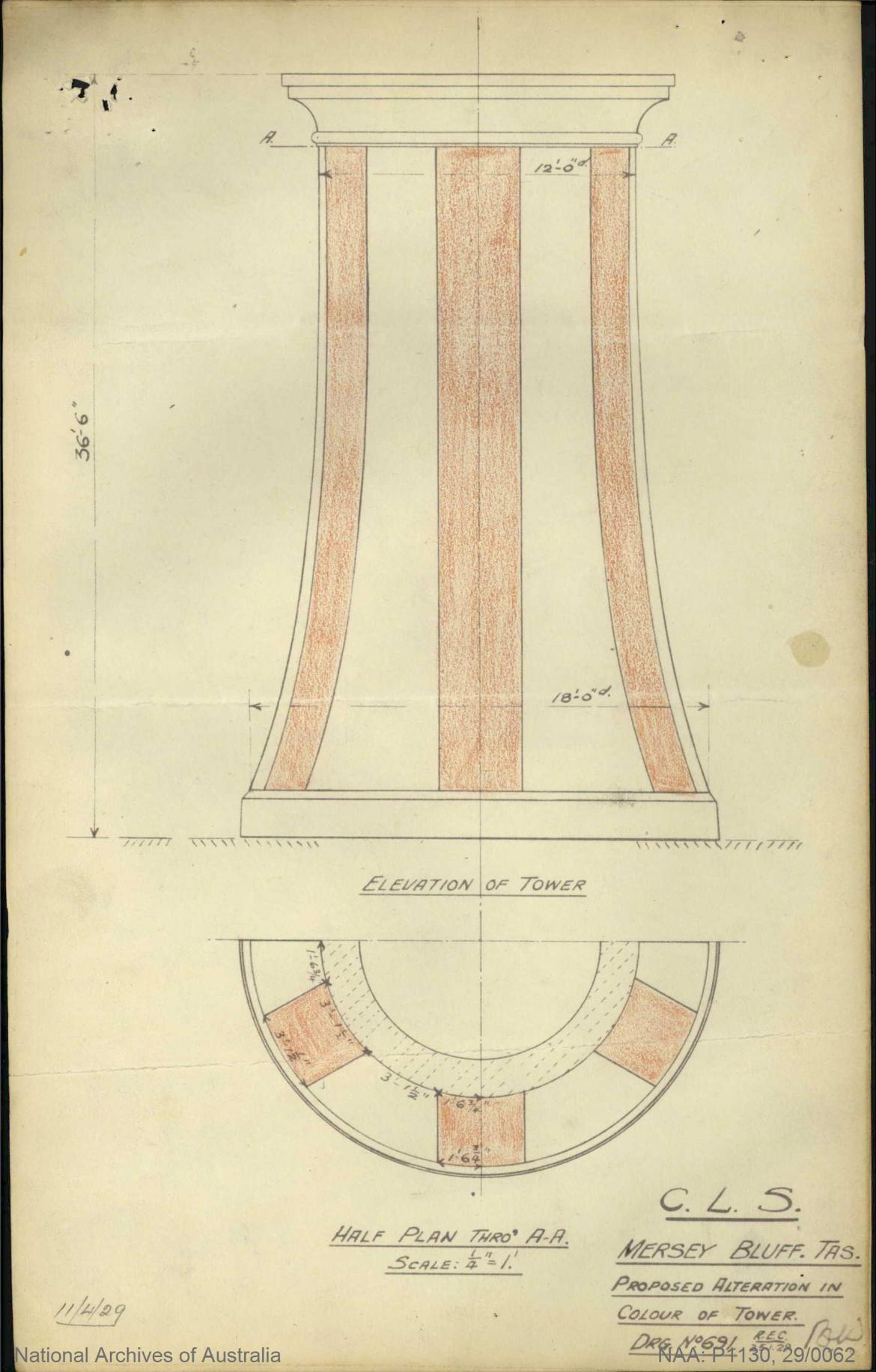 Figure 13. Proposed alteration in colour of tower, CLS 1929. NAA: P1130, 29/0062 (© Commonwealth of Australia, National Archives of Australia)
Figure 13. Proposed alteration in colour of tower, CLS 1929. NAA: P1130, 29/0062 (© Commonwealth of Australia, National Archives of Australia)
Alteration to the light
| Date | Alteration |
| 1910 | Lighthouse converts to acetylene operation with onsite gas generator. |
| 1920 | Lighthouse converts to DC Electic operation. |
| 1952 | 2nd Order Fixed Lens assembly installed. Original lens installed at the Althorpe Island Lead light (SA) from 1965-1991. |
| 1978 | Lighthouse converts to mains electric operation. |
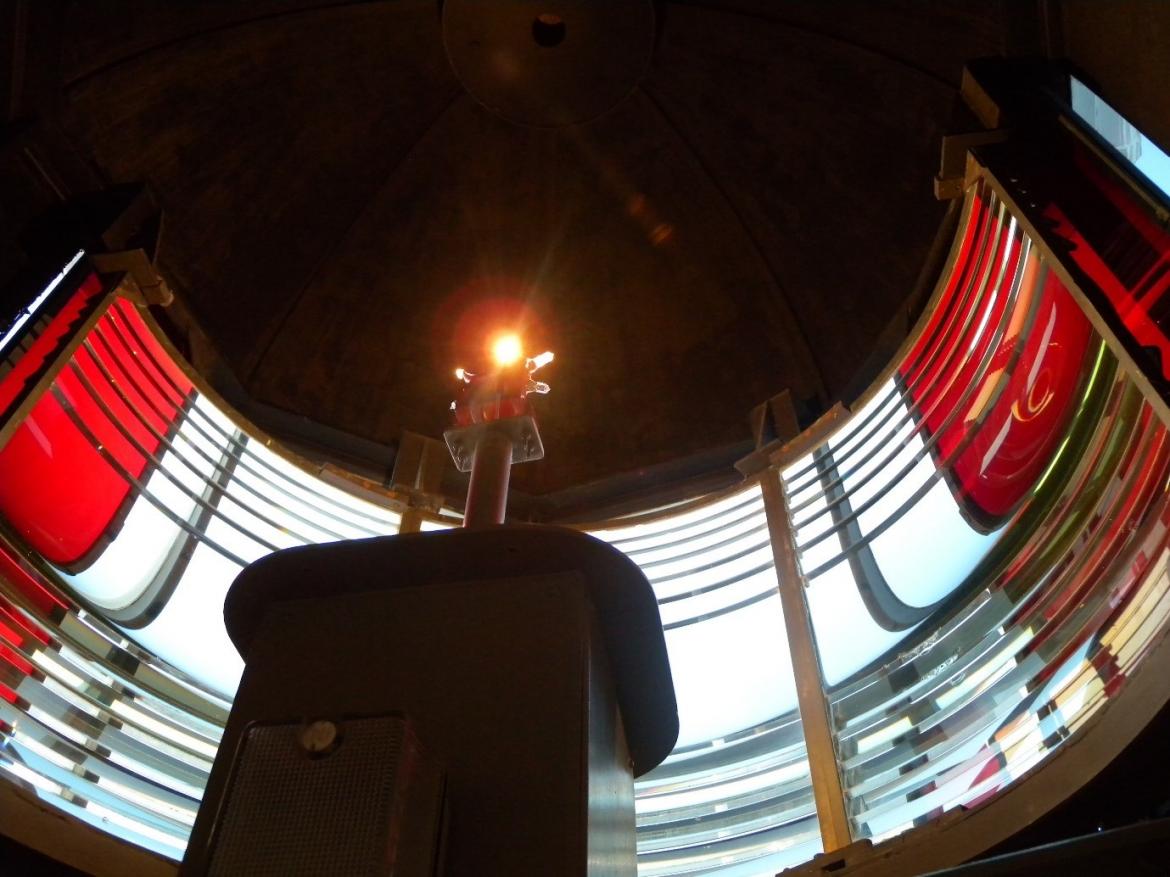 Figure 14 2nd Order fixed lens and current light source (Source: AMSA, 2010)
Figure 14 2nd Order fixed lens and current light source (Source: AMSA, 2010)
Recent conservation works
The table below documents recent conservation works carried out at the lighthouse.
| Date | Conservation works |
| 2014 | Lantern room and balcony repainted. |
| 2018 | Structure repaint due to vandalism. |
3.8 Summary of current and former uses
From its construction in 1889, Mersey Bluff Lightouse has been used as a marine AtoN for mariners at sea. Its AtoN capability remains its primary use.
3.9 Summary of past and present community associations
The lighthouse and its immediate surrounds maintains strong associations with a variety of groups.
Aboriginal associations
The local Devonport/Latrobe Aboriginal community maintain strong ties to the bluff. They are the knowledge-holders for the region, and are dedicated to exhibiting the history and culture of the bluff and surrounding area. The Six Rivers Aboriginal Corporation oversees matters concerning the bluff and Tiagarra.
In 1976, the Tiagarra Aboriginal Cultural Centre and Museum was established on the bluff which houses a large collection of artefacts and information on Aboriginal cultural heritage. Although first run by the Devonport City Council, the Tiagarra building now owned by the Aboriginal community. Further information can be found on the Centre’s website.
Local, national and international associations
The site’s contribution to the development of the district has cemented Mersey Bluff Lighthouse as a popular and significant local landmark. The easy access roads and walking tracks established in its vicinity indicates the site’s active inclusion in the local community. The tower and its iconic red stripes have also been identified as imperative to the Devonport City Council’s branding.
As a manned site from its construction in 1889 until 1920, Mersey Bluff Lighthouse maintains familial ties from past lightkeepers – ties which transcend local, national and international borders.
3.10 Unresolved questions or historical conflicts
Any historical conflicts and unresolved questions brought to light concerning the lighthouse’s history will be included in this section within future plans.
3.11 Recommendations for further research
Further research on the Superintendents (lightkeepers) stationed at the lighthouse would be beneficial in understanding the social history of the lighthouse. Additionally, further research into changes made to the tower and lightstation as a whole would provide greater insight into the transformation of the lightstation from its construction in 1889 to the present day.
________________________________________________________________________________________________________
Footnotes
![]() 4 Garry Searle, First Order: Australia’s Highway of Lighthouses, (SA: Seaside Lights, 2013), 34.
4 Garry Searle, First Order: Australia’s Highway of Lighthouses, (SA: Seaside Lights, 2013), 34.
![]() 7 ‘Devonport History,’ Devonport City Council, https://www.devonport.tas.gov.au/live/residents/devonport-history/
7 ‘Devonport History,’ Devonport City Council, https://www.devonport.tas.gov.au/live/residents/devonport-history/
8 ‘Mersey Bluff Lighthouse,’ Tasmanian News, Aug 30, 1889
9 ‘Mersey Bluff Lighthouse,’ Tasmanian News, Aug 30, 1889
10 ‘Mersey Bluff Lighthouse,’ Tasmanian News, Aug 30, 1889
![]() 11 ‘Mersey Bluff Lighthouse,’ Examiner, Aug 31, 1889
11 ‘Mersey Bluff Lighthouse,’ Examiner, Aug 31, 1889
![]() 12 ‘Mersey Bluff Lighthouse,’ Examiner, Aug 31, 1889
12 ‘Mersey Bluff Lighthouse,’ Examiner, Aug 31, 1889
![]() 13 ‘Mersey Bluff Lighthouse,’ Examiner, Feb 2, 1920
13 ‘Mersey Bluff Lighthouse,’ Examiner, Feb 2, 1920
![]() 14 Brewis, C R W., Preliminary report on the lighting of the coast of Tasmania and the islands in Bass Strait: Recommendations as to existing lights and additional lights, Department of Trade and Customs, (1912), pg. 12.
14 Brewis, C R W., Preliminary report on the lighting of the coast of Tasmania and the islands in Bass Strait: Recommendations as to existing lights and additional lights, Department of Trade and Customs, (1912), pg. 12.